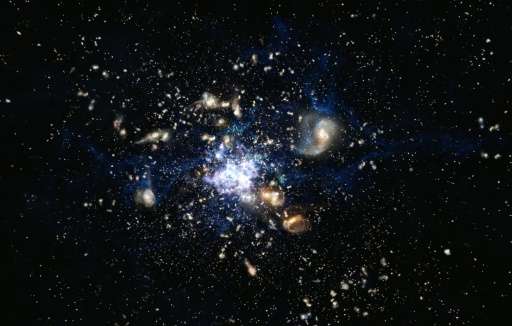August 3, 2015 report
Best of Last Week – A blow for supersymmetry, a saltwater lamp and sleep found to make memories more accessible

It was a very interesting week for physics as experiments at the LHC showed that a particle known as the "beauty quark" behaved as has been predicted by the Standard Model and thus represented a new blow for the "supersymmetry" physics theory.
Combining engineering and physics a team at Arizona State University demonstrated the world's first white lasers by using a thin layer of semiconductor material to create a nanosheet. And another team working in China demonstrated the first color-tunable and first graphene-based LED—it is capable of emitting colors across nearly the entire visible spectrum, perhaps marking a major step forward in display technology. Also a team at Virginia Tech found a way to harvest energy from a beam's self-induced, self-sustaining vibrations in airflow—capturing the kinetic energy in flowing air for such uses as self-powered sensors. Meanwhile another team at Duke University announced that they had set a new superfast fluorescence speed record by developing a light-emitting device that can turn on and off 90 billion times a second, possibly laying the groundwork for optical computing. And a startup team at Sustainable Alternative Lighting Corp announced a saltwater lamp designed to serve people without electricity—based on battery technology, the lamp requires just two tablespoons of salt and a glass of water to provide light for up to eight hours.
In other news, a team of researchers at McMaster University found a link between intestinal bacteria and depression—certain combinations, they discovered, could lead to both depression and anxiety. And another team built a model that shows how the surge in wealth inequality in the US may be reversed—mostly, they say, by convincing those that are not top earners to save more. Also a team of astronomers with the University of Geneva announced that they had discovered a star system with three super-Earths—and another giant—all just 21 light years away in the constellation Cassiopeia.
And finally, if you have ever found yourself having difficulty coming up with a word for something you know or a memory of something you have experienced, it might be tied to your nighttime habits. A team of researchers with the Basque Centre for Cognition, Brain and Language and Exeter University has found that in addition to helping form memories, sleep also makes our memories more accessible.
© 2015 Phys.org





















